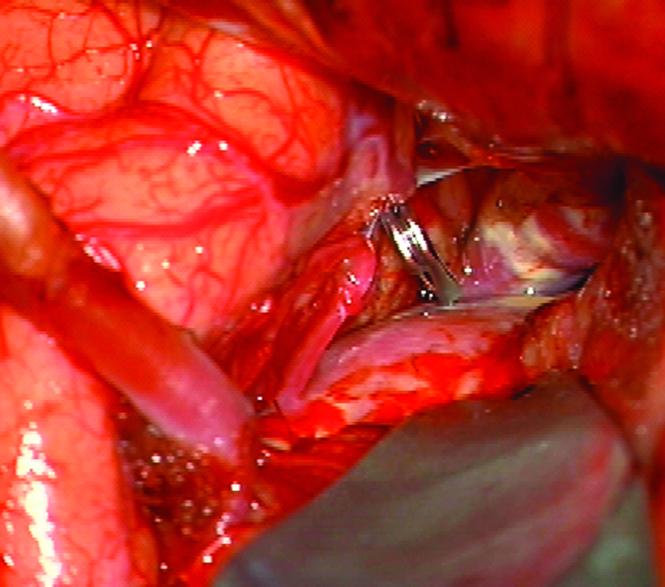Figure 4.
Computational fluid dynamics explains the post-surgical aneurysm thrombosis observed in Case 15. (A) Preoperative velocity streamlines demonstrate the hemodynamics of this giant MCA aneurysm,. Following ECA-MCA bypass with radial artery graft, two surgical options were considered: proximal aneurysm occlusion with the clip on the ICA distal to PCoA (option 1); or distal aneurysm occlusion with the clip on the MCA as it exits the aneurysm (option 2). (B) Proximal aneurysm occlusion results in flow through the center of the aneurysm and stagnation near the walls. Distal aneurysm occlusion results in flow along the walls of the aneurysm and stagnation in the center. Proximal aneurysm occlusion (option 1) was selected because it more dramatically altered intra-aneurysmal flow, and CFD predicted the pattern of peripheral aneurysm thrombosis based on stagnant flow and low shear stress near the walls. These simulations demonstrate that CFD can predict postoperative thrombotic complications and might be useful in planning surgical strategy.


